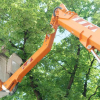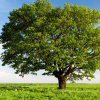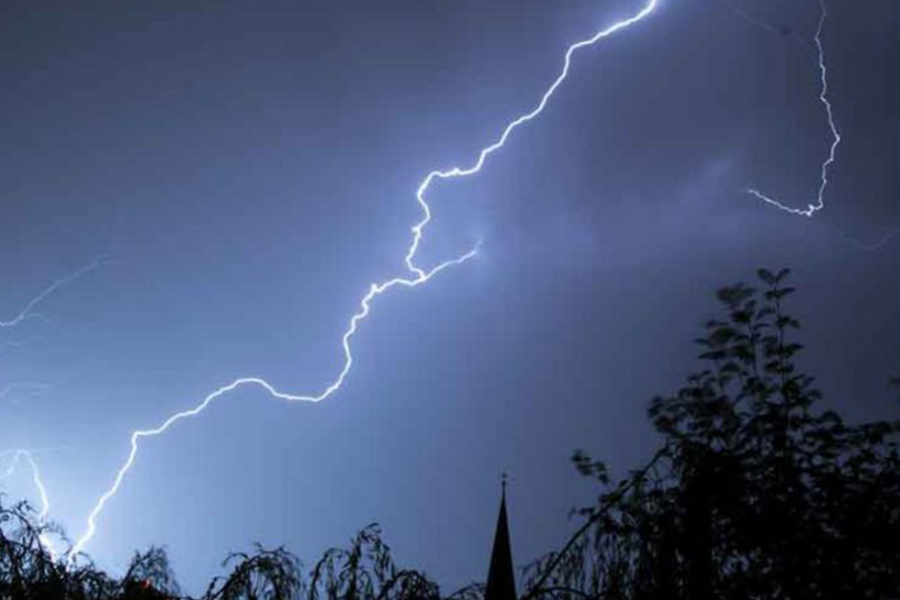
Ever noticed how a falling tree always seems to come as a surprise to most homeowners, and people in general? Most of us seem to think that trees are so huge and sturdy that it would take an F2 tornado or Katrina-level hurricane winds to completely uproot them. It may not look like it, but trees are susceptible to a sundry of external factors that could cause them to get damaged and fall over. Just like any other living organism on this planet, trees are susceptible to disease, decay, and aging. They grow old and become weak over time. Granted that some trees have double, or even triple, the lifespan of an average human, the fact is they do go through the same aging process as any living thing.
What Causes A Tree To Fall Over?
There are plenty of reasons why trees can sometimes fall over.
- Among them are improper planting conditions, advanced insect infestation, malnutrition, poor soil condition, flooding, construction damage, old age, and a host of other causes.
How to Tell Which Way a Tree Will Fall
Accurately predicting when a tree is going to fall is impossible. However, we can learn to spot the warning signs and do something about them before it’s too late. So, is your tree about to fall? Below are the telltale signs you need to know.
Signs Your Tree May Fall
Visible Dead Branches That Fall With Minimal Agitation
Okay. Seeing dead branches on a tree doesn’t necessarily mean it’s going to fall over entirely. It does, however, present a clue as to the current condition of the tree. When you start seeing falling dead branches, your tree is trying to tell you that there’s something wrong.
- Shedding branches is the tree’s way of self-pruning.
- It’s trying to make itself smaller, which typically means it’s not getting enough nourishment, which could also mean it’s getting attacked by burrowing insects, among other things.
There’s A Cavity/Hole In The Trunk Of The Tree
One of the side effects of a tree trying to shed its branches by self-pruning is the formation of a cavity inside its trunk.
- The open wound from the broken branch could lead to decay inside the tree. However, this may not mean that the tree is going to collapse soon.
- If the cavity is isolated and there’s enough solid wood around it, then your tree is probably not going to tip over or break into half.
It may be best to consult a tree professional when assessing this kind of problem.
The Presence Of Deep Cracks Or Missing Bark On The Trunk Of The Tree
Here’s another sign that your tree may be dead or dying. If you find patches of missing bark—otherwise known as cankers—on the trunk of your tree, you might want to have it examined by an Arborist.
- The presence of cankers is a sign that the tree is dying.
Deep cracks on the trunk should also be a concern.
- These make the trunk considerably weaker and therefore more likely to become a hazard.
When you spot a crack on your tree, it’s best to have it taken care of sooner than later.
The Tree Has A Tight V-Shaped Branch Growth
The branch growth on a tree should be at an ideal distance, so there’s enough room for the branches to develop. This strong union is evident in its U-shape.
- Branches that grow too close together, on the other hand, will often be in a V-shape. This could spell disaster for the tree and everyone or everything around it.
The best time to spot V-shaped branch growth is during late fall or during the winter after all the leaves have fallen off and the tree is well into its hibernation period.
The Roots Of The Tree Are Weak and Rotten
Now, this can be a bit harder to spot, since the tree’s root system is covered in soil. There is, however, a reliable way to determine if the tree is rotting inside.
- Check for mushrooms and other fungi growing around the base of the tree or on the trunk. A fungus is often a good indicator of rotting wood.
If this is the case for your tree, then you need to consult with a Certified Arborist to figure out the best course of action.









